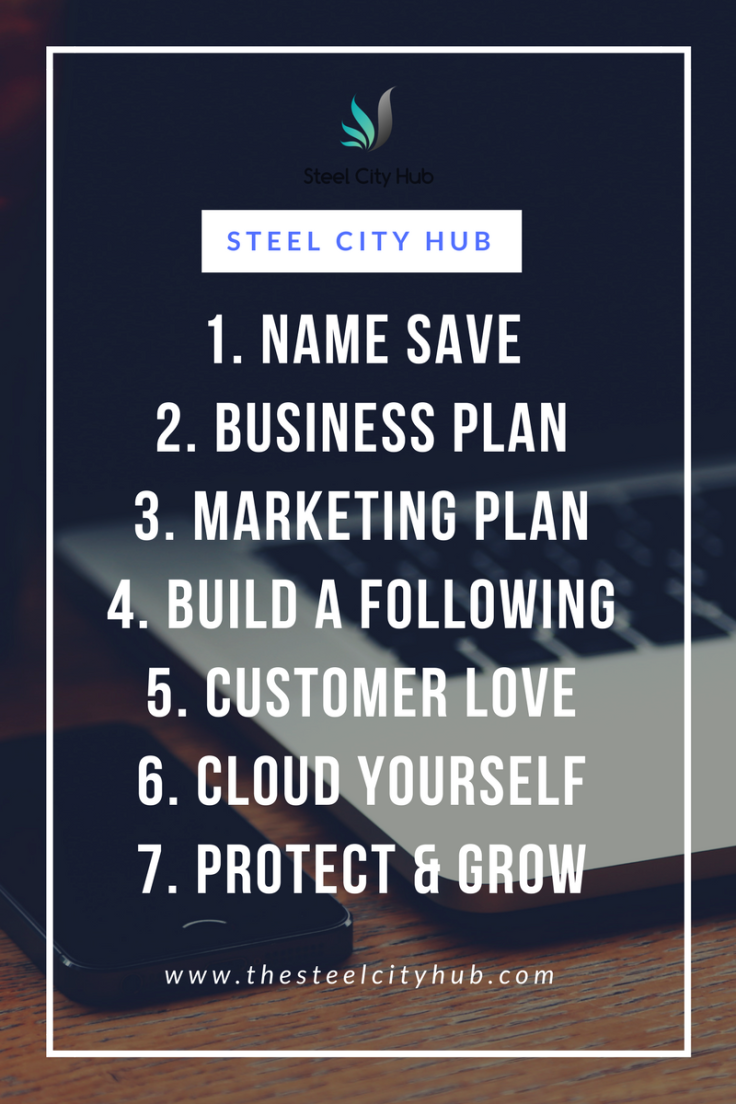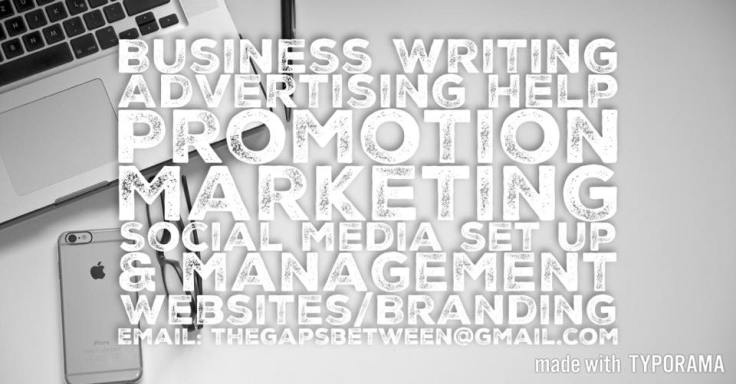7 Steps to Starting a Business in 2018
Every year, there are literally thousands of people and groups who find themselves wanting to start a business. According to well-know statistics, at least 80% of these start-ups fail in the first two years – why?
The main reasons for this are:
- Lack of Business Knowledge – what to do when you set up a business, how to manage staff, financials, perform simple bookkeeping, chasing debt etc.
- Overspending and Overtrading – spending too much and trying to grow too quickly, or in other words, doing too much, too soon.
- No Focus – overwhelmingly, very few new business have a strong sense of work ethic and the work in takes to get a business off the ground.
- No Plan – very few business start-ups begin with the simplest thing – a business plan, in fact, many start with a lack of direction before they launch their business.
- No Marketing Know-How – it’s ok if you’re starting with a list of in-place contracts and guaranteed income streams but for many, this is not the case; or where it is, business trading relies on one customer only. It’s not a favourable situation. Marketing is a term that is over-used but not well understood.
In this post, I’ll be highlighting the 7 most important steps to take in starting up a business, properly, in 2018. You may feel like adding things along the way but generally, without these 7 fundamentals, you’re likely to end up as just another failed start-up statistic:

There’s a fancy, little way to give an overview of the key steps. Now for more information:
- NAME SAVE
It’s not on the list of usual advice but from being in the business game for a number of years, it’s an issue that comes up time and time again and can be a costly mistake. What does Name Save mean?
Simply that when you think of a business name that you really like, check that no one else has it and save it one everything. I’m not just talking about setting up your new company on Companies House, that our partners, Hill & Co Accountants, Sheffield can help you with: www.hillandcoaccountants.com.
Your business domain name should be saved as soon as possible because there are companies out there who will buy the domain names of new company set-ups i.e. if you set up “Clean My House UK Ltd,” you’ll want ‘www.cleanmyhouseuk.co.uk’ or .com.
The same applies for getting your social media platforms set up – something we can obviously help you with i.e. your Twitter will need to be something like @cleanmyhouseuk and Instagram too. You get the idea.
2. BUSINESS PLAN
A business plan is the simplest way to get your business into focus. It’ll help you plan and look at what you’re going to do and how you’re going to do it. It’ll help you write an overview about your business, look at financial planning, potential revenue, your competitors, analysis of how you’ll fit your business into the current trade or sector.
We have a guide for start-up or developing businesses on how to write business plans and get started with marketing.
TO REQUEST THE FREE BUSINESS PLAN/MARKETING GUIDE, ENTER YOUR DETAILS HERE:
3. MARKETING PLAN
Similar to the business plan, the marketing plan will help narrow down how your business will reach its intended audience. It’ll help you lay out how you will reach your customers and attract people or businesses that your business is aimed at.
For a more detailed look at what you need to do to create an effective marketing plan from initial research, your target audience analysis, your unique selling point and your competitor research right through to your social media, marketing and PR strategy, you can request the guide using the contact form above.
For help with writing a marketing/business plan, you can e-mail us: thegapsbetween@gmail.com or for more marketing advice, see our article: What is Marketing?
4. BUILD A FOLLOWING
The most successful companies of late have worked on building a tribe, a community or a following. However you envisage getting people interested in your business, building a community of supporters is vital for continued success.
Your following, whether online or offline, can be your family, friends, customers, clients, followers on social media, page likers, other businesses you work with – whoever, they are there to boost your business, support it and provide free advertising for you.
One way that businesses are building a following at the moment is to run a Facebook Group. This links to your Facebook business page but provides those more interested in your services/products with a space to communicate with you and give feedback on a more intimate level. You can find out more information on building a following for your business by either dropping into one of our FREE Business Sessions (see above), in Sheffield, or by following us on social media.
5. CUSTOMER LOVE
A huge reason that a lot of start-up’s fail is that they simply don’t know how to treat their key people – their customers. By creating a process (which can be formed while you produce your business plan), of how you treat your customers, you’ll not only retain current customers but you’ll also attract new ones because your word-of-mouth testimonials will be so good.
What do I mean by a process?
Firstly, the initial point of contact. How you advertise or attract your customers. Hard sell is old fashioned and a little embarrassing, unless you’re at a specific ‘talk about your business’ event. Speak to your audience like you care about THEIR needs, not your own.
Secondly, once you have them as a client. Make them feel special. A lot like a romantic relationship, keep clear lines of communication. If they e-mail you, e-mail back. If they want some advice, give it to them, unless they’re asking for your particular paid knowledge.
Particularly, DON’T SURPRISE THEM WITH UNEXPECTED FEES. I was recently on a Facebook group where someone was slating a business because she phoned this business for advice then was sent a bill for the phone call a few days later without any prior warning. She wasn’t even told during the phone call that there were fees to pay.
Always make your fees and charges clear and easy to understand. People get angry and can damage your reputation if you ignore this.
Thirdly, when you’ve finished working with them, treat them with respect. Follow up, don’t talk behind their backs to others. Encourage them to work with you again one day. Ask them for their feedback or a testimonial and leave them the same if they require one.
6. CLOUD YOURSELF
It’s not on the usual start up list but this is 2018, not 2008. Everything is becoming cloud-based. What does cloud-based mean? It means keeping your information, whether that be your bookkeeping, your files, your photographs and your financials up there in the cloud.
It sounds scary, but it really isn’t. It’s safe (and will soon be safer, thanks to GDPR), and a good way to ensure maximum working efficiency. Instead of having to log onto a certain computer to raise your invoices or save your work only on your laptop hard drive, through cloud-based software, you can really be efficient, working from any computer, phone or tablet, at anytime. It’s a no-brainer and serves as extra points for customers who might want a cloud-relationship. Our favourites for small businesses are:
QuickBooks – Bookkeeping & Accounting Software
Dropbox – Files/Photo Sharing & Working Software.
7. PROTECT & GROW
Ok, so we’ve squeeze two important things into one here. I’ll summarise these to save boredom. Basically, if you have a product that’s worth a patent, protect it. Insure you business by looking for good deals on business insurance comparison websites.
Make sure you know about Copyright laws. Don’t try to use anyone else’s photographs or quotes without their permission or without properly providing source evidence. If you’re writing something, get it read by a proof-reader (we offer this service) to ensure you’re not infringing anyone’s rights or doing anything wrong.
Business is a political and legal minefield and we’ve seen so many people, with the best intentions, get taken to court or fined heavily. The best way to protect your business from the off is to seek legal and proper business advice.
In terms of growth, look at your business plan and seek advice on growth opportunities. There is so much funding out there for small businesses to utilize. It’s always worth considering funding options without having to go straight for a loan.
We want to help you start and grow your business and that’s why we are proud to be partnering with Hill & Co Accountants in Sheffield to be offering this:
On Friday 23rd March 2018, 9.30am – 11.30am, we are holding a FREE Business Drop In Session with our partners, Hill & Co Accountants in Sheffield (see image above). Here’s we’ll be able to guide you through any business start-up issues you may have and advise on the costs of running a business. We are also there to help with any accountancy, bookkeeping or business planning advice you may need, as well as marketing advice and funding advice. To book, please call: 0114 2315400 or e-mail: hillandcosheffield@gmail.com.
We hope you enjoyed our 7 Steps to Starting a Business in 2018 and if you’d like weekly advice, please join our Facebook group – it’s FREE!
You can also Like our Business Page @SteelCityHub on Facebook, follow us on Twitter @SteelCityHub1, follow us on Instagram @Steelcityhub or just get in touch to discuss your needs. We’re always listening.
























